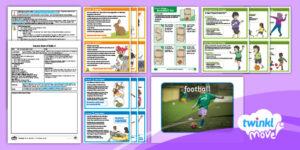What Defines Target Games?
Target games are characterized by the primary objective of directing an object towards a designated target area. This can be a bullseye, a goal, a marked spot, or any other defined location that signifies scoring. These games often involve physical prowess, mental acuity, and sometimes even elements of defense and offense.
Types of Target Games

Target games can be broadly classified into two main categories:
- Precision Target Games: These games emphasize accuracy and finesse. Players must skillfully aim their projectiles to hit a specific target. Examples include:
- Archery: Where archers shoot arrows at a target to score points based on proximity to the center.
- Darts: Players throw darts at a dartboard, aiming for the highest-scoring areas within the board.
- Tactical Target Games: These games combine precision with strategic maneuvering and may involve elements of defense and obstruction. Examples include:
- Basketball: While primarily a team sport, aspects such as shooting hoops from various distances illustrate a precision target game.
- Soccer: Penalty kicks or free kicks often represent tactical target games where players aim to score goals against a goalkeeper.
Elements of Team Target Games

Team target games introduce additional layers of complexity and collaboration:
- Teamwork: Players must coordinate their efforts to achieve strategic goals, such as passing the ball in soccer or setting up a strategic position in volleyball.
- Strategy: Teams often devise tactics to outsmart opponents, whether through feints, set plays, or collaborative attacks.
- Defense and Offense: Besides aiming at targets, teams may need to block or intercept opponents’ attempts, adding a defensive element to the game.
Benefits Beyond the Game

Engaging in team target games offers participants various benefits:
- Physical Fitness: These games often require agility, coordination, and endurance, promoting overall physical health.
- Cognitive Skills: Players must strategize, make quick decisions, and adapt to changing situations, enhancing cognitive abilities.
- Social Interaction: Team target games foster camaraderie and communication skills among teammates, crucial in both sports and life.
Conclusion
Team target games combine the thrill of competition with the challenge of precision and strategy. Whether aiming for a bullseye in archery or defending a goal in soccer, these games captivate participants and spectators alike. They not only promote physical fitness and mental agility but also nurture teamwork and strategic thinking. As these games continue to evolve, they remain a timeless source of excitement and engagement for players of all ages and abilities.
